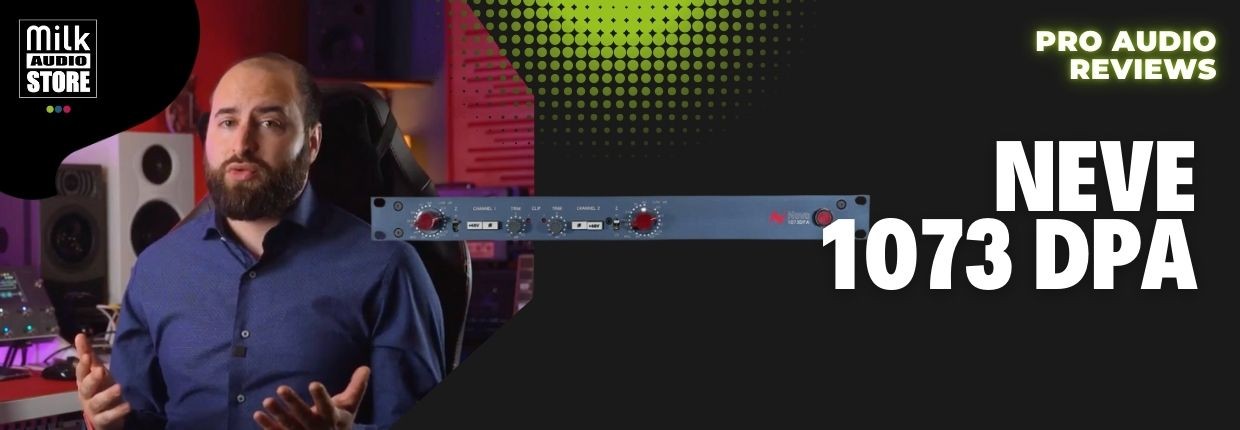Recording, Mixing and Mastering
Published on 30/10/2024

In this new video I want to introduce the Neve 1073 DPA microphone preamplifier. Basic 2-channel version with clean design with red main preamp gain knob, output Trim volume, phantom power option, phase inversion and microphone impedance switch.
A key feature of the Neve 1073 DPA is the possibility of being able to choose the impedance of the microphone preamplifier between low impedance or high impedance, although in reality the two choices are in my opinion in the order of low impedance. In fact, the two values are 300 Ohms or 1200 Ohms, selectable via the dedicated switch.
As you know, we usually match the impedance of the preamp with that of the microphone output, so that the impedance of the preamp is on the order of 10 times that of the microphone. As always, this is a rule of thumb and I encourage you to experiment to appreciate the sonic differences.
I would like to add that usually, when we vary preamp impedance, logically, the volume also varies, because impedance, being a resistance, is closely related to output volume. But the Neve 1073 DPA adjusts the volume internally and, therefore, you can make comparisons on the fly.
Obviously, the differences depend on the microphone you use perhaps some times you have a more emphasized change other times less; you can perceive a warmer recording or more swollen in the bass or clearer: many factors are at play!
The advantage of using a dedicated external mic preamp instead of the internal preamps on sound cards is that you can pull the gain making the preamp work hard, but thanks to the output knob you can preserve the output volume and not clip. In this way we give warmth and color to the signal itself.
In the YouTube video you can hear the main sound of the Neve 1073 DPA by acting on the preamplifier gain and performing the same performance but increasing it step by step. You will hear the signal coloring by adding harmonics until it distorts completely.
The high gain going up to 70 db is definitely useful for a microphone with very low output, such as old ribbon mics or the newer Shure SM7b, to give an example, but also for my Lauten Audio LS208, which requires a minimum of 50/60 dB.
By using microphones that already have a high output, you can distort the signal resulting in creative analog distortions.
Join us today and get 5% off your next order!

Empty cart